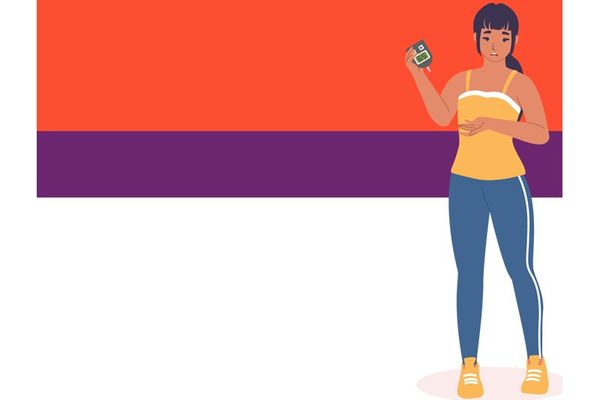Insulin therapy can cause hypoglycemia, or a blood sugar level less than 70 mg/dL. Hypoglycemia occurs when you have too much insulin in your body and not enough blood sugar (glucose) in your cells. For instance, if you take rapid-acting insulin before lunch but don't eat for an hour, your blood sugar levels will drop, putting you at risk of hypoglycemia. Exercising, which reduces blood sugar by improving insulin sensitivity levels, can lead to hypoglycemia. Stress and illness also can cause erratic blood sugar patterns.
Symptoms of hypoglycemia include hunger, shakiness, nervousness, sweating, dizziness or lightheadedness. Severe hypoglycemia can lead to confusion, clumsiness, fainting and even seizures, coma and death if untreated. Hypoglycemia can also occur overnight, and you may feel tired, irritable or confused when you wake up. The good news is that hypoglycemia is far less common in people with type 2 diabetes than in those with type 1.
Preventing Hypoglycemia
To avoid hypoglycemia, it's important that you eat regular meals and snacks and keep a close watch on your blood sugar levels when you're sick or stressed, and before, during and after exercising. You should also:
- Take your insulin as directed and learn how to adjust it based on your activities and food intake.
- Check your blood sugar levels during long periods of physical activity, such as hiking, working in the garden or even a marathon shopping trip.
- Avoid alcohol. It can trigger hypoglycemia even a day or two after drinking because it triggers increased insulin production. If you do drink, make sure you eat a snack or meal at the same time.
- Check your glucose levels before driving if you're at risk for hypoglycemia. During long trips, check your levels frequently and stop for a snack if levels drop below 70 mg/dL.
Treating Hypoglycemia
If you start to feel lightheaded or have any of the other symptoms of hypoglycemia, grab 4 ounces of juice, 6 ounces of regular (not diet!) soft drink, 8 ounces of skim milk, four to six pieces of hard candy or three or four glucose tablets—all of which will get sugar into your system quickly. Avoid anything with fat, which slows sugar absorption. Ideally, you should keep glucose tablets or glucose gel with you at all times.
The goal is to get your blood sugar level back to normal as quickly as possible. If it doesn't return to normal after 15 minutes, you need another 15 grams of carbohydrate. After levels return to normal, eat a meal or snack to further stabilize your blood sugar. If you are unconscious or too confused to swallow, you need an emergency injection of glucagon. Glucagon is a hormone that tells your liver to release glucose. You can get a prescription for a kit from your doctor, and then train the people around you at work and home to use it. If you are prone to severe hypoglycemia, you should have a glucagon kit with you at all times.
Also wear a medical identification bracelet or necklace just in case. That way, if you get hypoglycemia and are confused or unconscious, someone will know that you have diabetes.







